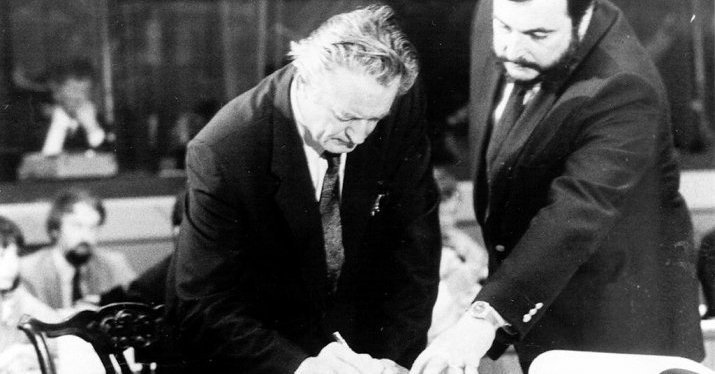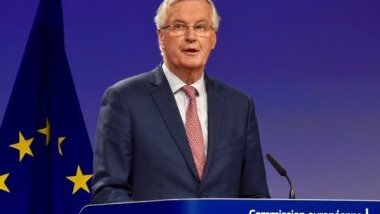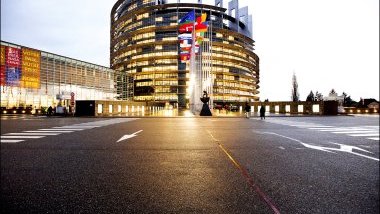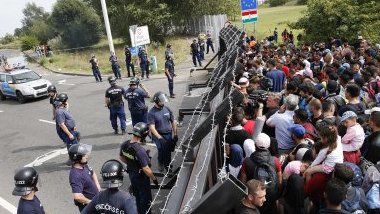Since the Treaty of Lisbon, the expression “common market” has definitely been replaced by “internal market” or “single market”. According to Article 26 of the Treaty on the Functioning of the European Union (TFEU), the single market is defined as “an area without internal frontiers in which the free movement of goods, persons, services and capital is ensured”.
The rules ensuring the major freedoms in the market are dispersed in several different chapters and titles of the TFEU, which demonstrates the legal importance of this single market. Due to the very nature of European integration, this importance is also historical, as most of the European policies have to respect freedom of movement and free competition. What is the real weight of the single market in the European project today? Does the European Union only come down to this?
The single market is the first fateful moment of European construction
From the outset, European integration was built on the idea of a common market. In 1957, the Treaties of Rome took up the idea of the Dutch Minister of Foreign Affairs, Johan Willem Beyen, and created an area in which customs duties, quantitative restrictions and taxes with similar effect were meant to gradually disappear. This was not entirely the case, and the progression was hindered by a contrasted period for the European project (1965-1984), between crises and revivals.
As such, despite advances concerning a political Europe (with the creation of the European Council and of the European political cooperation) and an economic Europe (reflections on monetary Europe after the fall of the Bretton-Woods system led to the European Monetary System (EMS) in 1979), a feeling of “Eurosclerosis” or “Europessimism” set in the European leaders’ minds. A feeling reinforced by Margaret Thatcher’s demands, not really inclined to European solidarity.
The political situation seemed to unblock only in 1984. Numerous projects were initiated from the 1980s to revive the Community machine (Genscher-Colombo or Spinelli plans), but the ideas converged during the European Council of Fontainebleau.
Jacques Delors, President of the European Commission, tasked commissioner Francis Cockfield with the realization of a “white paper” containing 310 necessary measures for the completion of a single market with 4 fundamental freedoms (the free movement of goods, people, services and capital). The European Council of Milan concurred with Cockfield’s proposals and launched an intergovernmental conference leading to the Single European Act, foreseeing the completion of the single market on 31 December 1992. The idea of the single market was thus decisive in overcoming the “Eurosclerosis” period, the first important long-term crisis that shook the European project.
THE pillar of the current European Union
From an economic viewpoint, the implementation of the single market, and in particular of the free movement of capital, had to lead to the creation of a single currency. The theory of the impossible trinity indeed stipulates that it is impossible to have at the same time a fixed exchange rate regime (as for the EMS, even if it was not a totally fixed system), an independent monetary policy (the EMS countries had to align more and more with the German Bundesbank’s policy), and a perfect free capital movement (in principle implemented with the Directive 88/361/EEC in 1988). The solution to this “collateral problem” of a single market and an EMS taken more and more for a “mark zone” was the creation of a single currency, confirmed by the Maastricht Treaty in 1993, while the single market was about to be (theoretically) completed.
The single market and its elements are thus the essential pillar of the European Union. These are the most concrete realizations in the eyes of the citizens. Without them, what would the European Union be? The single market is particularly important as it is continuing to evolve, permanently aiming at a completion that no one can accurately foresee. The European commissioner Michel Barnier tried to complete it between 2010 and 2014, but many states were reluctant to its total deepening.
With the single market and the euro, the EU has become “polemical”, an object of debates between citizens among who, at worse felt indifferent towards the pre-Maastricht European integration, and at best were tacitly consenting to it. The free movement of people, workers and services particularly concentrated the opposition, especially during the constitutional referendum in France in 2005, or during the Brexit debate.
The four freedoms of movement are however indivisible, to the risk of witnessing the emergence of an “à la carte” Europe. The logic of the internal market concerns more and more sector policies of the EU: energy, capital markets and digital technology are the last to date. More than ever, the single market and its elements represent a Europe that one loves or hates.
The EU should not base its whole durability on the single market only
The historical, legal and political importance of the single market is so significant that the EU seems to exist solely through it. Yet, is it a good thing? Can the EU really depend on a technical realisation whose legal mysteries are little known? If the review of the first 25 years of the single market is rather positive, the negative aspects are regularly cited, as the “Polish plumber”, the “excessive deregulation” and many other “threats”, sometimes truly fantasized.
It is, however, problematic that the single market, this thing quite abstruse for most of us after all, represents the only DNA of the EU. One could argue that other fulfillments characterise the European Union, like Erasmus or the Schengen area. Yet, the European ruling classes only swear by the integrity of the internal market. The latter is also characterised by a very important asymmetry between the “sacrosanct” competition policy and the industrial policy, almost inexistent yet necessary in strategic forward-looking sectors, such as energy transition, as well as to protect the European economy from a sometimes unfair competition from other international economic actors.
To efficiently fight all its existential threats, the European Union has to develop a new collective project. The question of European democracy necessarily comes back into the heart of the debate. If functionalist integration, the one which foresaw a spill-over effect leading to political integration after economic and monetary integration, has failed, the idea of a transnational democracy should not be abandoned. It is as necessary to achieve as the single market, because it cannot rest exclusively upon the market strengths of free and fair competition: on the contrary, it must be the bearer of a vision of European society mainly based on forward-looking sectors, social wellbeing and the durability of the economic activities. And all this has to be backed by decisions democratically taken at the continental level, bringing this way the European general interest to the fore.






Follow the comments: |
|
